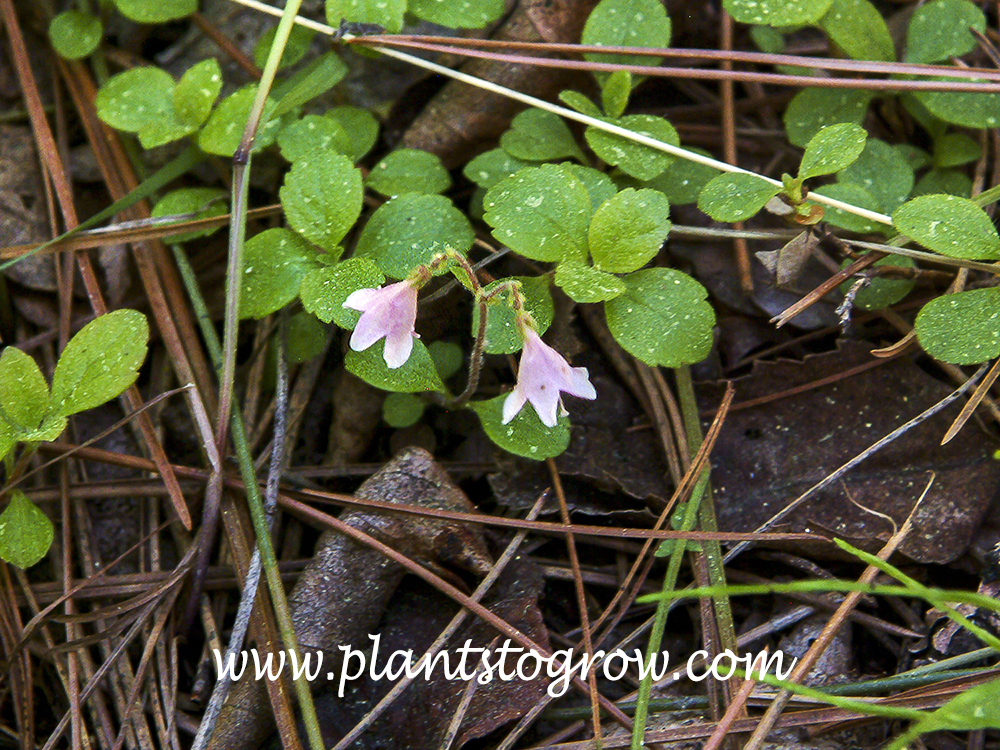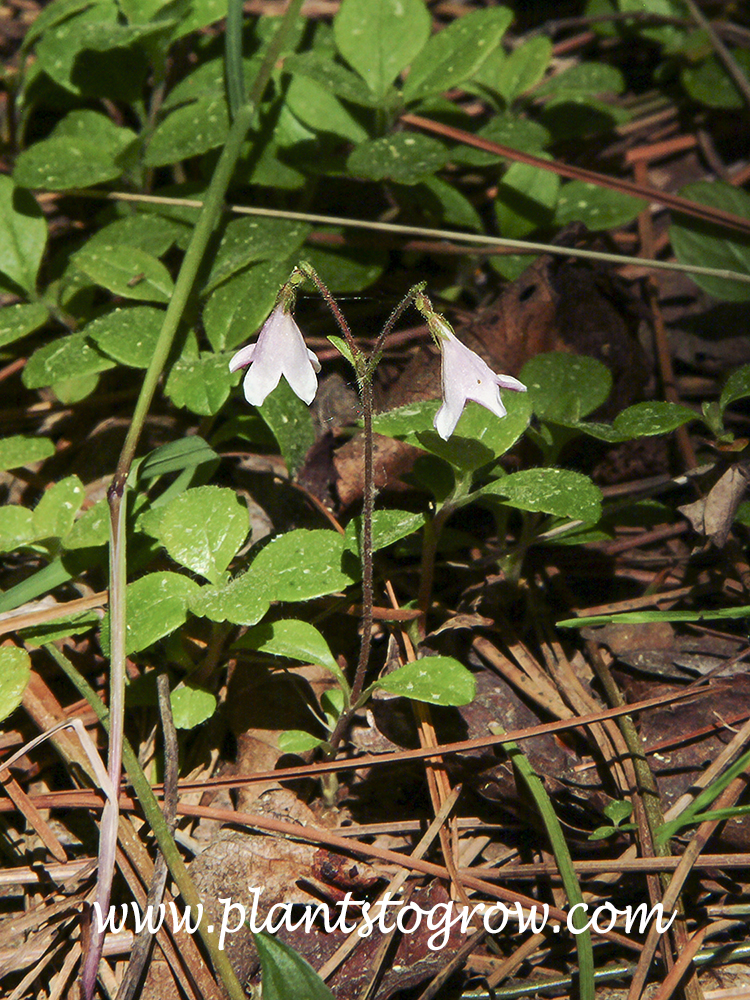| Description | Twinflower (Linnaea borealis) A small native plant with twinflower on a forked stalk in June-July. |
|---|---|
| Pronunciation | (LIN-ee-uh)(bor-ee-AL-is) |
| Plant Type | Wild Flowers, Site author's observations |
| Hardiness Zone | (2)3-6(7) |
| Sunlight | part shade, shade |
| Moisture | average, moist, never dry |
| Soil & Site | cool northern forest |
| Temperature | does best in the cooler end of hardiness zone, reported being heat intolerant |
| Flowers | pair of small pink nodding flowers at the top of a slender stalk (peduncle), June, bore at the top of a forked stem (pedicel), reported being fragrant |
| Fruit | tiny dry fruits have hooked bristles that hitchhike rides on animals |
| Leaves | mostly basal, occur in a pair |
| Stems | considered a subshrub, has a perennial woody base with a thin bark |
| Dimensions | 4-6 inches |
| Propagation | difficult from seed, division |
| Misc Facts | Named after Carl Linnaeus who is considered to be the father of taxonomy. Borealis from its native circumboreal habitats. Swedens national flower. AKA: Twin Flower. Twin Sister |
| Author's Notes | I came across these plants on Wisconsin Point. They were growing in the pine needle litter and the soil was sand. |
| Notes & Reference | #191-Minnesota Wild Flowers (www.minnesotawildflowers.info) |

Cart


